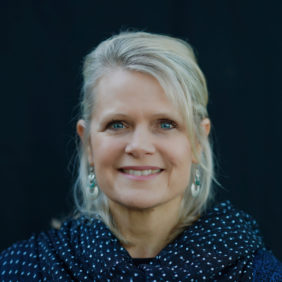Many of us have heard the story of Dan Price, the CEO who made headlines by cutting his own salary so he could raise his lowest-paid employees to a minimum salary of $70k a year.
People said his company would go under. Others said that he set an unrealistic precedent. Many said he was crazy.
In a country where the CEO of large organizations typically make 1200x more than their lowest-paid employee, we’d argue that Price epitomizes being more, doing more.
Price didn’t make this drastic shift because he wanted to make headlines. He did it for multiple reasons cited in interviews and news reports: because he heard that one of his employees had to get a second job at McDonald’s to make ends meet, because he realized his employees didn’t have enough to make ends meet, among other reasons. He valued his employees’ life balance and ability to earn a living wage.
The raise made a huge impact on employees. And a huge impact on the organization as well.
We live in a country where we view the CEO as the most important person in the organization (they’re not) and where scarcity is embedded in our collective consciousness.
Scarcity Breeds More Scarcity
Look only as far back as spring 2020, when shoppers stockpiled toilet paper and hand sanitizer—when they already had a hefty stash at home. We think there’s not enough money or resources to go around, so we hoard. And while it’s true that the toilet paper shelves were bare for much of the spring and summer, if we had all just made do with what we had there would have been plenty for everyone.
The same is true for company revenue and profits and how we choose to pay our employees.
Compulsive hoarding is a pathological manifestation of a scarcity mentality, usually triggered by traumatic loss or deprivation. Scarcity mentality is something we may acquire through life experience and socialization ahead of entering the workplace. Think about it: men are socialized in many cultures that they should aim to be the strongest and fastest of their peers. Women are conditioned to believe they should seek to become slimmer than their peers and have the fewest wrinkles and blemishes. Look to the magazines at the grocery checkout line or pop culture and you’ll be hard-pressed to disprove that.
Price proved that a CEO who is willing to disrupt their own scarcity mentality and the status quo that stems from that can have an amazing impact on their employees and on the industry more broadly.
As long as we have in our collective consciousness that there’s not enough money, power, influence, beauty, etc. to go around, we’ll continue to have great disparity among people.
Be More, Do More Instead
Being more and doing more is about deciding as a leader what kind of impact you want to make on others. Many leaders haven’t thought about that. They haven’t taken the time to think about why they’re doing what they’re doing—in Price’s case, why he was taking a $1.1 million salary while his employees couldn’t make ends meet.
When you have clarity around that, it’s clearer where you can model the way for your organization and others.
Of course, a step like what Price took may not be the only thing that needs to change in the organization. But it’s important to recognize that CEOs are an essential part of successful change.
Dan Price isn’t an anomaly; other high-profile CEOs have done the work and demonstrate their own version of being more, doing more in action.
- Ben & Jerry’s has a page on its website all about the issues the company cares about and it encourages citizens to take action on its current focus, criminal justice reform. It recently teamed up with Advancement Project National Office to support its #FreeAndSafe campaign in an effort to reduce jail and prison populations.
- Greystone Bakery has an open hiring policy, giving opportunities to prospective employees who have found it difficult to find work elsewhere because of limited education and qualifications, criminal history, or lack of work experience. The company cites benefits of this policy including equity and community growth as well as saving Greystone on recruitment costs and opening up a wider talent pool.
And the best part? We’ve never heard of an organization that thought outside the box to make a difference who regretted it.
At Kadabra, we help CEOs and organizations Expand What’s Possible, by putting the Learn Lead Lift Framework® into practice and helping them identify ways to do leadership, teamwork, and change differently and, dare we say, better.


 Heather Leavitt-Martinez (she/her/hers) – Senior Product Manager
Heather Leavitt-Martinez (she/her/hers) – Senior Product Manager Wendy Ryan (she/her/hers) – CEO
Wendy Ryan (she/her/hers) – CEO Shawn Bunger (she/her/hers) – Senior Consultant
Shawn Bunger (she/her/hers) – Senior Consultant Crystal Whiteaker (she/her/hers) – Senior Consultant
Crystal Whiteaker (she/her/hers) – Senior Consultant Gail Finger (she/her/hers) – Senior Consultant
Gail Finger (she/her/hers) – Senior Consultant Monica Silkwood (she/her/hers) – Director of Operations and Experience
Monica Silkwood (she/her/hers) – Director of Operations and Experience Johanna Lyman (she/her or they/them) Senior Consultant
Johanna Lyman (she/her or they/them) Senior Consultant Sherri Horan (she/her/hers) – Senior Consultant
Sherri Horan (she/her/hers) – Senior Consultant